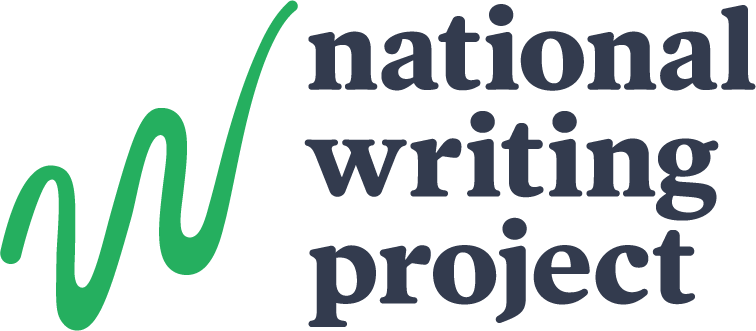Intro to SIFTing Through the Outbreak
Author: Mike Caulfield
Caulfield, Mike. “Sifting Through the Pandemic.” Sifting Through the Pandemic, 2020, infodemic.blog/.
There’s a lot of bad information out there about the recent coronavirus outbreak. At the same time, just tuning out is not an option. Whether it’s currently an epidemic or a pandemic, it’s serious business.
What can we do about this? How can we take advantage of the new levels of online engagement of the public with these issues while making sure that engagement is not manipulated by bad actors, or misinformed by error?

Over the past four years, I have worked with students and faculty to identify the core skills and habits that students and citizens are missing that leave them vulnerable to misinformation and disinformation on the web. We have organized them into a model called SIFT: Stop, Investigate the source, Find better coverage, and Trace claims, quotes and media to the original context.
We call these “moves” and we tie each one to a couple simple skills you can usually execute in 30 seconds or less. You can learn all the moves and associated skills in less than an hour, and our work with students indicates that these skills will make a dramatic difference in your ability to sort fact from fiction on the web (and everything in between).
Stop
When you feel strong emotion, surprise, or just an irrepressible urge to share something… stop. Then use your other moves…
Investigate the Source
- Let’s Hover! (on NowComment)
- Just add Wikipedia (on NowComment)
Find Better Coverage
- Cross-check with news search (on NowComment)
- Reverse image search (Coming soon)
Trace Claims, Quotes, and Media to the Original Context
- Check the date (on NowComment)
- Click through and find (on NowComment)
And
- Basic Skills Wrap-Up (on NowComment)
A bit more…
Want to know a (little) bit more about why SIFT works? Watch the video.
Next: Let’s Hover!
About the Author

Mike Caulfield is a digital information literacy expert working at Washington State University. He has worked with various organizations on digital literacy initiatives to combat misinformation, including AASCU’s American Democracy Project, the National Writing Project, and CIVIX Canada. He is a winner of the Rita Allen Misinformation Solutions Prize, and the author of the award-winning textbook Web Literacy for Student Fact-Checkers. His approach to digital critical consumption, often referred to as the “four moves”, is popular among those teaching first-year college students how to evaluate and contextualize information sources. His work has been covered by NPR, The Chronicle of Higher Education, and The Times (of London).
Creation of this site was supported in part by the National Writing Project, in partnership with Washington State University Vancouver.

We’d like to expand and improve these resources. If you’re interested in contributing to this work — either with production talent, promotion, or other support — we’d love to talk to you. This is a big challenge, and we need all hands on deck.





0 General Document comments
0 Sentence and Paragraph comments
0 Image and Video comments
New Conversation
New Conversation
New Conversation
New Conversation
New Conversation
I agree I feel that there is a lot of information going out About this pandemic and I believe a lot of people are believing the wrong Information
New Conversation
Hide Full Comment
So half of us don’t wear a mask or face covering at all and just go outside like there isn’t a full on pandemic going on
New Conversation
Hide Full Comment
New Conversation
New Conversation
New Conversation
COVID-19 has made 2020 uneventful and eventful at the same time, so much has happened, and every piece of information about COVID-19 is taken with care and for every grain of salt there is. We are in Pandemic you’ll believe whatever the media sys at this point, even if it’s possibly false.
New Conversation
Hide Full Comment
New Conversation
Its really devastating that the coronavirus has ruined so many things for people. Such as baby shower, graduations, and much more. But I think that on the bright side we have found new ways to engage with people through these hard times. For instance, some schools had drive thru graduations to make sure that their senior still feel the support
New Conversation
Hide Full Comment
New Conversation
New Conversation
New Conversation
Some people think it’s just a virus and why did it come out of nowhere like was it planned and some think the virus came from the 4G towers.
New Conversation
Hide Full Comment
New Conversation
New Conversation
New Conversation
New Conversation
Many people believe everything they read or hear, so what are a few ways to know if information is good.
New Conversation
Hide Full Comment
New Conversation
New Conversation
New Conversation
New Conversation
New Conversation
New Conversation
New Conversation
We all think is a joke and that we can be out here having to much fun because somebody can get the virus and we don’t want to go through what the virus put through people. In the hospital .
New Conversation
Hide Full Comment
I just feel like u can’t lie to us as people because we are to smart and that we will find out what’s really with this virus.
New Conversation
Hide Full Comment
New Conversation
New Conversation
New Conversation
Hide Full Comment
New Conversation
New Conversation
New Conversation
New Conversation
New Conversation
New Conversation
New Conversation
New Conversation
New Conversation
We deserve the right to know what’s really going on with this virus and these 5G towers they trying to put up
New Conversation
Hide Full Comment
New Conversation
New Conversation
New Conversation
New Conversation
New Conversation
New Conversation
New Conversation
New Conversation
New Conversation
New Conversation
New Conversation
New Conversation
New Conversation
New Conversation
New Conversation
New Conversation
New Conversation
New Conversation
New Conversation
New Conversation
New Conversation
New Conversation
New Conversation
New Conversation
New Conversation
New Conversation
New Conversation
New Conversation
New Conversation
New Conversation
New Conversation
New Conversation
New Conversation
New Conversation
New Conversation
New Conversation
New Conversation
New Conversation
New Conversation
New Conversation
New Conversation
New Conversation
New Conversation
New Conversation
New Conversation
New Conversation
New Conversation
New Conversation
New Conversation
New Conversation
New Conversation
New Conversation
New Conversation
New Conversation
New Conversation
New Conversation
New Conversation
New Conversation
New Conversation
New Conversation
New Conversation
New Conversation
New Conversation
New Conversation
New Conversation
New Conversation
New Conversation
New Conversation
New Conversation
New Conversation
New Conversation
New Conversation
New Conversation
This is why people need verification skills before spreading information.
New Conversation
Hide Full Comment
New Conversation
New Conversation
New Conversation
New Conversation
New Conversation
New Conversation
New Conversation
New Conversation
This makes sense of how gullible people can be.
New Conversation
Hide Full Comment
New Conversation
New Conversation
New Conversation
New Conversation
New Conversation
New Conversation
New Conversation
New Conversation
New Conversation
New Conversation
New Conversation
New Conversation
New Conversation
Have to take the correct measures to spread info
New Conversation
Hide Full Comment
New Conversation
New Conversation
New Conversation
New Conversation
New Conversation
New Conversation
New Conversation
New Conversation
New Conversation
New Conversation
New Conversation
New Conversation
New Conversation
New Conversation
New Conversation
New Conversation
New Conversation
New Conversation
New Conversation
New Conversation
New Conversation
New Conversation
New Conversation
New Conversation
New Conversation
New Conversation
New Conversation
New Conversation
New Conversation
New Conversation
New Conversation
New Conversation
New Conversation
New Conversation
New Conversation
New Conversation
New Conversation
New Conversation
New Conversation
New Conversation
New Conversation
New Conversation
General Document Comments 0


SIFT allows for individuals to follow a process that cuts down on the spread of misinformation and the overall increases safety precautions.
New Conversation
Hide Full Comment
New Conversation
New Conversation
New Conversation
New Conversation
People loosing jobs left to right because these pandemic is messing up their money and people’s life are these jobs to make a living.
New Conversation
Hide Full Comment
New Conversation
New Conversation
New Conversation